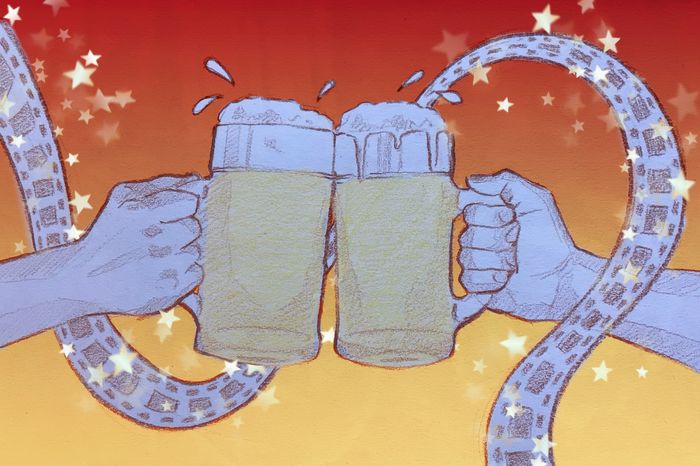Introducing Sofia Coppola
Ruby Randall shares three films that are the perfect introduction to the work of director Sofia Coppola

“We felt the imprisonment of being a girl, the way it made your mind active and dreamy, and how you ended up knowing which colors went together. We knew that the girls were our twins, that we all existed in space like animals with identical skins, and that they knew everything about us though we couldn’t fathom them at all. We knew, finally, that the girls were really women in disguise, that they understood love and even death, and that our job was merely to create the noise that seemed to fascinate them.” -Jeffery Eugenides, The Virgin Suicides (1993)
Reading this philosophy on girlhood through teenage boys’ eyes, I was shocked by how Eugenides could get it so right. If you’ve ever watched one of Sofia Coppola’s films, this treatise transforms into a how-to guide within itself. Dreamy imprisonment, silent understanding, and wistful pastels weigh down her cinematography in a heady blur of beautiful young birds trapped in gilded cages.
The Virgin Suicides (1999)
For her first proper feature Coppola chose to adapt a preexisting work, and in doing so she achieves the rare feat of adding something that was missing. The Virgin Suicides concerns the five doomed Lisbon sisters and their arrested coming-of-age, resulting in a sororal suicide pact. Unlike Coppola’s film, the novel tells this exclusively through the perspective of a group of then-teenage boys. For Eugenides, what his narrators can never know is the point, but all the novel really leaves us with is a voyeuristic shell of a story rather than an interesting mystery. Coppola’s adaptation barely adds any new dialogue in her script; in taking the audience into the Lisbon house and the school bathroom, she shows the interior world absent from her source through visuals alone. At once, she expands into tragic female tropes (a certain attempt in a bathtub echoes a certain Danish noblewoman in a stream) and centres on her girls’ individual worlds. By Coppola’s hand, the story is still told in the boys’ voices, but is now from the sisters’ perspective. Though they still play a role as the audience’s guides introducing the Lisbon household, the boys are rendered background characters by the sisters’ more prominent presence.
Lost in Translation (2003)
It seems that Coppola walks the tightrope of “write what you know” when balancing her original scripts, Lost in Translation being no exception. The film surrounds Charlotte (Scarlett Johannson), a Californian newlywed experiencing a seismic jolt in culture and her marriage upon a visit to Japan. Her quarter-life crisis breeds a complex relationship with Bob Harris (Bill Murray) – an ageing star staying to film whiskey adverts. Coppola confessed in interviews that the idea sprung from her own fantasy about meeting Bill Murray in the Japanese hotel she stayed at with her first husband in 1999. As a static picture, Lost in Translation is perfect. Everything from the colour palette to the hotel hallways adds to a sense of loneliness or space between time that forms a key part of Coppola’s atmosphere. However, as a moving picture, the personal touch is a little ham-handed. Charlotte as Coppola’s glove puppet is often infuriatingly judgemental, and the whole “culture shock” schtick stretches a little thin past the umpteenth goofy Japanese stereotype. Lost in Translation is a beautiful, emotionally raw film, but at times its rawness wrongly assumes realness. Charlotte and Bob come across as less sympathetic as they take their dissatisfaction out on others, and by the closing credits I was left with more frustration than understanding towards the self-destructive pair.
Marie Antoinette (2006)
There are three myths busted across Coppola’s script (which relied on actual historical research, mind you) that we have to tackle before praising one of the few decent biopics of our age.
1) Marie Antoinette was 14 when she married Louis XVI.
2) Marie Antoinette never said “Let them eat cake”, nor was she involved in the political climate of France at that time.
3) Marie Antoinette was Austrian, and lived there until her marriage to the French king. In childhood she was recorded as struggling to learn the French language.
Marie Antoinette was not the evil figurehead for all that was wrong with the French monarchy, but a slightly spoiled teenage girl. Coppola reveals unseen parts of Marie Antoinette’s life; her wishes to act/become a shepherdess, the pressures on begetting an heir, and her relationship with the women around her. These elements are synchronised rather than contrasting with Coppola’s portrayal of her attractive surroundings. Most of the scenes were filmed in the Palace of Versailles, and Milena Canonero’s interpretative costumes accompanying the post-punk soundtrack elevate Marie Antoinette from its predecessors through Coppola’s positioning; the audience inside looking out.
Want to share your thoughts on this article? Send us a letter to letters@varsity.co.uk or by using this form
 Comment / Cambridge’s tourism risks commodifying students18 April 2025
Comment / Cambridge’s tourism risks commodifying students18 April 2025 News / Cambridge student numbers fall amid nationwide decline14 April 2025
News / Cambridge student numbers fall amid nationwide decline14 April 2025 News / Greenwich House occupiers miss deadline to respond to University legal action15 April 2025
News / Greenwich House occupiers miss deadline to respond to University legal action15 April 2025 Comment / The Cambridge workload prioritises quantity over quality 16 April 2025
Comment / The Cambridge workload prioritises quantity over quality 16 April 2025 News / Varsity ChatGPT survey17 April 2025
News / Varsity ChatGPT survey17 April 2025





